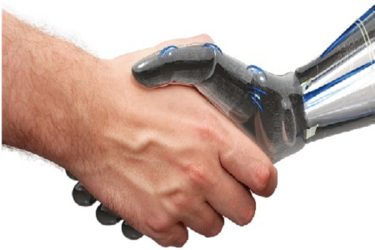Creating A Culture That Embraces People And AI
By Arunava Bag, CTO (U.K. & Europe), Digitate

Through the centuries, human civilizations have undergone periodic leaps in technology. From steam to electricity to computing, societies have made radical shifts as new ways of doing things have transformed how we work. We are now in what’s been deemed the Fourth Industrial Revolution, an era of digital transformation that will forever change the way we work, and the way organizations operate.
In today’s world, technological advances such as automation, robotics, and artificial intelligence – allow businesses to continue to grow and remain competitive. It has become clear that the organization of the future will be driven by the opportunities these technologies create.
Embracing automation and AI opens opportunities to meet existing and new business goals through greater agility, resilience, and responsiveness. Employees will still be an essential part of the equation; however, ensuring they remain content and productive will mean creating an environment where AI and automation are seen not as a threat but rather, as trusted and useful tools. Becoming an enterprise powered by AI calls for cultural change as well as investment in technology.
AI And Automation At Work
The impact of AI and automation can be demonstrated by studying the transformation of a very manual business to one that is deploying AI. Consider the following scenario and see how AI and automation are impacting both business operations and customer experiences.
Imagine a delivery business in a midsized city that handles all the e-commerce orders for several large retail customers. In the early days of online shopping, the delivery company would have been mostly dependent on manual processes. They would plan drivers’ routes and calculate the number of drops per day manually. Drivers would be given a print-out of their route, itinerary and the drops they would be making.
Though the customers know what day their delivery will arrive, they don’t know when during that day; they might spend hours waiting. If the driver faces an unexpected delay, that could throw off a whole day’s workload.
However, business operations don’t have to (and will not) stay this way. A delivery business powered by data and AI can analyze the best routes and change them if traffic or weather conditions become problematic, thus ensuring delivery timelines. It also can notify both the driver and the customer in real time, keeping everyone informed of changing routes and delivery time expectations.
With automated AI in place, customers then can request a delivery change at a moment’s notice, saving the driver time, keeping the parcel safe, and avoiding a costly failed delivery. This has the added benefit of helping strengthen the customer’s relationship with the retailer and the retailer’s relationship with the delivery firm and creates a potentially a new business opportunity – where flexible delivery times and change options can attract premiums.
Carefully Tailored Transformation
Typically, organizations develop their business operating models based on processes that dictate the start and endpoints of every activity. Instead, a model that pulls in insights based on data will allow for people, resources, infrastructure, and analytics to be used to better affect the model. Gut-instinct and intuition always have played a part in making decisions. Adding data and analytics into the mix means those are based on organizational intelligence.
As organizations can gather more and more data to predict scenarios and inform decisions, the insights and decisions are likely to be more accurate and reliable. Sales figures, customer feedback, machine performance, product returns, and more can all be analyzed and fed into a cycle of improvement.
Though many manual operations are ripe for complete automation, many more will be suitable for partial automation, where elements of manual processes are augmented with the application of AI and human intervention. That can leave people with more time to devote to activities that add significantly more value to the business and that can’t be so readily automated.
A Changing Culture
Far beyond simply churning through a to-do list of functions, a data-driven and AI-powered enterprise will contain many more ways to add value to the business. In a typical finance office of the past, for instance, you would have found a team of people sifting through piles of paper invoices that needed to be entered into a ledger, processed, and eventually paid. This repetitive task is the perfect candidate for automation. As for the people who no longer need to process paperwork, they could be diverted to work on credit control tasks, for example – helping safeguard the organization’s cash flow.
The attention needs to shift to outcomes instead of tasks and outputs. Determine where people’s efforts and intelligence are most likely to add more value and focus there. At the same time, understand that some people may be anxious in the face of so much job-related change. This will be an important consideration for building a more open and positive culture. As some roles might go away, new roles will emerge from these changes. Make it a priority to talk to them about how roles, jobs, and the organization are changing. It may have become a cliché to say that people are the greatest assets of a business, but it’s true, and they must not be overlooked as AI begins to play a bigger part.
As technology continues to shift and transform how we work, what remains the same is the importance of human workers – both in facilitating the change, and in helping to achieve business goals. Adding AI and automation can seem intimidating to the people who fear the loss of their jobs, so the introduction of new technology must walk in lockstep with change management that supports a company culture that values its staff.
